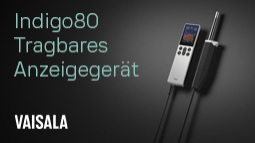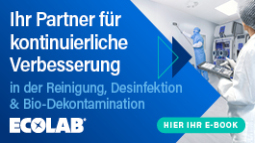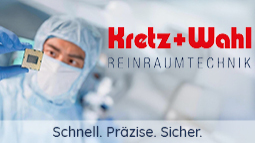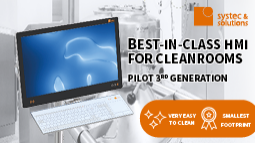Statement by Joachim Schäfer, managing director of Messe Düsseldorf GmbH on MEDICA 2016 in Düsseldorf (14 - 17 November)
Medical technology continues to be a fascinating growth market. There was a very strong phase, particularly at the beginning of the millennium, with enterprises achieving two-digit increases with regard to the sector-wide average over a period of several years in a row. This phase seems to have ended. However, the medical technology business continues to be described as promising throughout the course of numerous market reports. The innovative power of the suppliers is a strong indication of continuing good market perspectives. The share of expenditures for research and development in relation to sales, for example, is at nine percent with respect to German medical technology companies, significantly higher than those in the chemical industry or the processing industry. In addition, according to the European Patent Office, in 2015, there was no other technological sector where as many patent applications had been submitted on a world-wide scale than in the field of medical technology.
For the companies, access to their customers has changed, a development once more characterised as a market-trend barometer this year, thereby significantly influencing the world’s leading medical trade fair, the MEDICA in Düsseldorf (scheduled date: 14 – 17 November 2016/ Monday - Thursday). While medical technology suppliers have been dealing with physicians and the directors of individual hospitals for decades, in today’s age, investments take place through co-operations within purchasing networks or in large corporate hospital operator groups through higher-ranking, centrally acting entities. Furthermore, a strong position is due to trade, via which suppliers are able realise their market presence in preferred countries in a relatively simple way, particularly in the export business. With all of these developments, suppliers see themselves as being confronted with tougher competition and a stronger level of price pressure.
The concentration of purchasing power is reflected at the MEDICA by the visitors’ high level of decision-making competence as well as an increase of visitor numbers from non-medical fields, such as the hospital management and trade on a national and international level. More than 80 percent of MEDICA visitors (2015: 130,000) are significantly involved in or provide professional consultation for purchasing decisions.
Suppliers in top form – digitalisation continues to make progress
For suppliers, any MEDICA trade fair provides the opportunity to present themselves in top form to an audience with decision-making power and involved in sales. This seems more necessary than ever because the medical technology is encountering the outlined market developments with value-oriented sales techniques. Thereby, the focus is not just on the price of medical-technology products, equipment and systems, but on a cost-benefit consideration throughout the complete product life cycle. After-sales services such as unit maintenance, for example, as well as user trainings or also suitable financing are being taken into consideration here.
With regard to new products, the MEDICA 2016, with once again around 5,000 exhibitors from approx. 70 countries, will be of particular interest to the global health business. This is because the market is characterised by the dynamics of important supplier trends. Therefore, a visit to Düsseldorf at the middle of November is an absolute must for anyone who wants to stay up-to-date.
For example, the digitalisation of healthcare is progressing at an unstoppable rate, and this concerns all fields, outpatient and clinical care, as well as patients and physicians alike. With reference to Germany, the latest enacted E-health Act should ensure that the networking of stakeholders within the scope of the healthcare process is considerably optimised by means of a more effective collection and utilization of patient data – at least this has been stated as its clear goal. The predominant "digital patchwork" up until now pertaining to intrinsically sophisticated, but poorly compatible solutions could now be woven into a better overall system using consistent data integration.
Innovations in focus and great prominence “waiting in the wings”
MEDICA 2016 visitors will be able to see for themselves what the digital future in the healthcare sector will be like via the exhibitors’ many innovations as well as the lectures and presentations at the MEDICA CONNECTED HEALTHCARE FORUM (with the MEDICA App COMPETITION) or the MEDICA HEALTH IT FORUM (each in hall 15).
In particular, “wearables” and smartphones in combination with special health apps, which can also be used by patients themselves, have the potential of becoming an indispensable element of networked health in the future. Numerous new products relating to this topic have been already presented at the MEDICA 2015, such as a mobile 22-channel ECG system for tablet PCs and smartphones as well as an analysis tool for recording sleeping activity – delivering a quality level virtually equal to that of sleep laboratories. Countless other mobile health applications are currently under development, whereby many focus on cardiovascular diseases, diabetes as well as the remote monitoring of therapies. Here a particularly high level of user potential can be expected in the future with regard to patient numbers.
The topic of big data is not any less exciting, whereby it would be probably better called smart data. At its core, it has to do with compiling and evaluating enormous amounts of patient data in order to be able to gain knowledge with regard to the development of and effective therapy for certain diseases. The best future prospects can be expected due to big players in the digital economy such as Google, Apple, Microsoft or IBM also becoming active in the healthcare sector in addition to many startups. These players are currently investing enormous sums, for example, in the development of artificial intelligence. The results entail innovative software, which, in part, offers sensational options. This applies, for example, to the research and development of algorithms for automated image analysis. In the field of stroke, there is already a very promising solution with the goal of making the professional expertise of neurologists generally available via the software-based assessment of CT images. In this way, faster decisions with regard to suspected cases of stroke can be made in the accident and emergency departments without a neurologist necessarily being present.
The MEDICA ECON FORUM will also be dealing with the opportunities and consequences of healthcare digitalisation. The forum (in hall 15), organised as a joint effort between the Techniker Krankenkasse (a German statutory health insurance company) and Messe Düsseldorf, has been firmly established as a platform for health policy dialogue, shown by the confirmations of prominent guests to again attend this year’s event. Those who have already confirmed their participation include, among others: The Federal Minister of Health, Hermann Gröhe, the NRW Minister of Health, Barbara Steffens, or also Maria Klein-Schmeink, health policy spokeswoman of the Bundestag parliamentary group Alliance 90/The Green Party (Bündnis 90/Die Grünen).
The third dimension is finding its way into operating theatres
Not only bits and bytes are affecting the healthcare business, however. Medical technology also has exciting topics to offer. At the moment, innovations for interventional procedures are seen as particularly important. In the case of modern surgery procedures, an "integrated" approach is in demand. Data deriving from medical imaging flows into the controls of surgical assistance systems. They can even be generated during surgery by imaging systems directly available in the operating theatre, ensuring that the intervention can take place in a precise and gentle manner. Here, above all, progress in the field of endoscopy and instruments for minimally invasive surgery translate into great benefit.
Currently, the third dimension is increasingly finding its way into operating theatres. In the case of so-called 3D laparoscopy systems, there are two image sensors that are precisely aligned with each other at the end of the endoscope, providing the surgeon with a lifelike endoscopic 3D image during the course of minimally invasive surgery. The spatial depiction makes it easier for the surgeon to make an assessment with regard to anatomy and the use of instruments. Thereby, for example, needles can be better perceived during suturation, which enables a more precise and quick procedure.
Conferences directly integrated into the specialist trade fair
Such important medical technology trends will not only be represented by exhibitor innovations at the MEDICA, but will also be reflected within the scope of the programmes of the accompanying conferences.
For example, these include the MEDICA MEDICINE & SPORTS CONFERENCE, dealing with the use of applications in close proximity to the body and "wearables” for monitoring vital signs, or the MEDICA EDUCATION CONFERENCE.
This conference is being organised this year for the third time by the German Society for Internal Medicine (DGIM) and offers participants an excellent opportunity to gather and exchange information on new technologies and their medical use as part of a scientific training event held in parallel to the world's largest medical trade fair. Of the four conference days, each individual day offers a particular thematic focus. Along with the innovations already mentioned in the field of 3D laparoscopy, among other things, the event will be started off with "New operative techniques during surgery”.
On the other days, the MEDICA EDUCATION CONFERENCE will be dedicated to imaging and interventional procedures (e.g. magnetic resonance tomography and sonography), future technologies for internal medicine (e.g. remote monitoring in the case of chronic disease) as well as, on the event’s last day, diagnostics in the fields of internal medicine, laboratory medicine, toxicology and hygiene.
With reference to the MEDICA conference programme, furthermore, the 39th German Hospital Conference as a leading event for the directors and management of German hospitals, the international DiMiMED conference for specialists from the field of disaster and military medicine as well as the MEDICA PHYSIO CONFERENCE will be forming a close content-oriented link to the topics of the specialist trade fair – aimed toward the specific interests of their respective participant target groups.
Complete range of outpatient and hospital care
Now, and in the future, a central strength of the MEDICA continues to be that it does not just deal with solutions for one individual medical specialist discipline at a time, but that it offers solutions for the complete “workflow” of patient treatment.
Almost 5,000 exhibitors will use the MEDICA 2016 in order to present a full range of new products, services and processes for use within the scope of outpatient and clinical care on over 116,000 square meters of booked floor space.
The individual focuses of the MEDICA trade fair, which are clearly structured according to hall, include: Electromedicine/medical technology (more than 2,500 exhibitors), laboratory technology/diagnostics, physiotherapy/orthopaedic technology, commodities and consumables, information and communication technology, medical furniture and specialist furnishings for hospitals and doctors’ offices.
COMPAMED – hotspot for complex high-tech solutions
This year, once more in parallel to the MEDICA, the COMPAMED will be taking place for the 25th time. Always scoring top annual results with reference to the number of exhibitors and visitors, it has long since developed into the leading international marketing communication platform for suppliers of the medical technology industry. And it is not just the numbers that are right with almost 800 exhibitors. Also the quality of the range of offers has changed through the years, continuously improving in stride with the changes on the medical technology market itself. Where, at one time, simple parts, components and equipment for technical devices and medical products had primarily been presented, today, COMPAMED is a hotspot for complex high-tech solutions.
Here, the microsystem technology solutions for mobile diagnosis, monitoring and therapy systems are particularly in line with the current trend. These include, among others, smart sensors and energy storage systems for use in "wearables", microtechnology applications for intelligent implants or printed electronics. In addition, the subcontracting and outsourcing of services for all elements of the process chain (R&D, production, supply chain management, quality management, spare parts handling, etc.) are continuing to gain in importance. Irrespective of whether a customer from the medical technology industry is a large corporation or a small family-run business: Suppliers present themselves as competent partners to all of them. This enables them to focus on their respective core competencies and to improve efficiency by outsourcing processes which are not within the scope thereof.
With 18,800 visitors last year, the COMPAMED broke its best record so far. One of the reasons for this: Extending the trade fair to four days. This year, the event will also take place from Monday to Thursday, being held fully in parallel to the MEDICA (in halls 8a and 8b). This grants suppliers and their customers - primarily product developers, responsible for production or purchasing decision-makers of the MEDICA exhibitors - valuable extra time for discussions concerning joint projects.
This unique combination allows MEDICA and COMPAMED to represent the entire process chain and full range of medical products, devices and instruments. Together, they keep the Düsseldorf trade fair complex (19 halls) fully booked.
As in previous years, it will be possible to visit both events with a single ticket.
Messe Düsseldorf GmbH
40001 Düsseldorf
Germany











